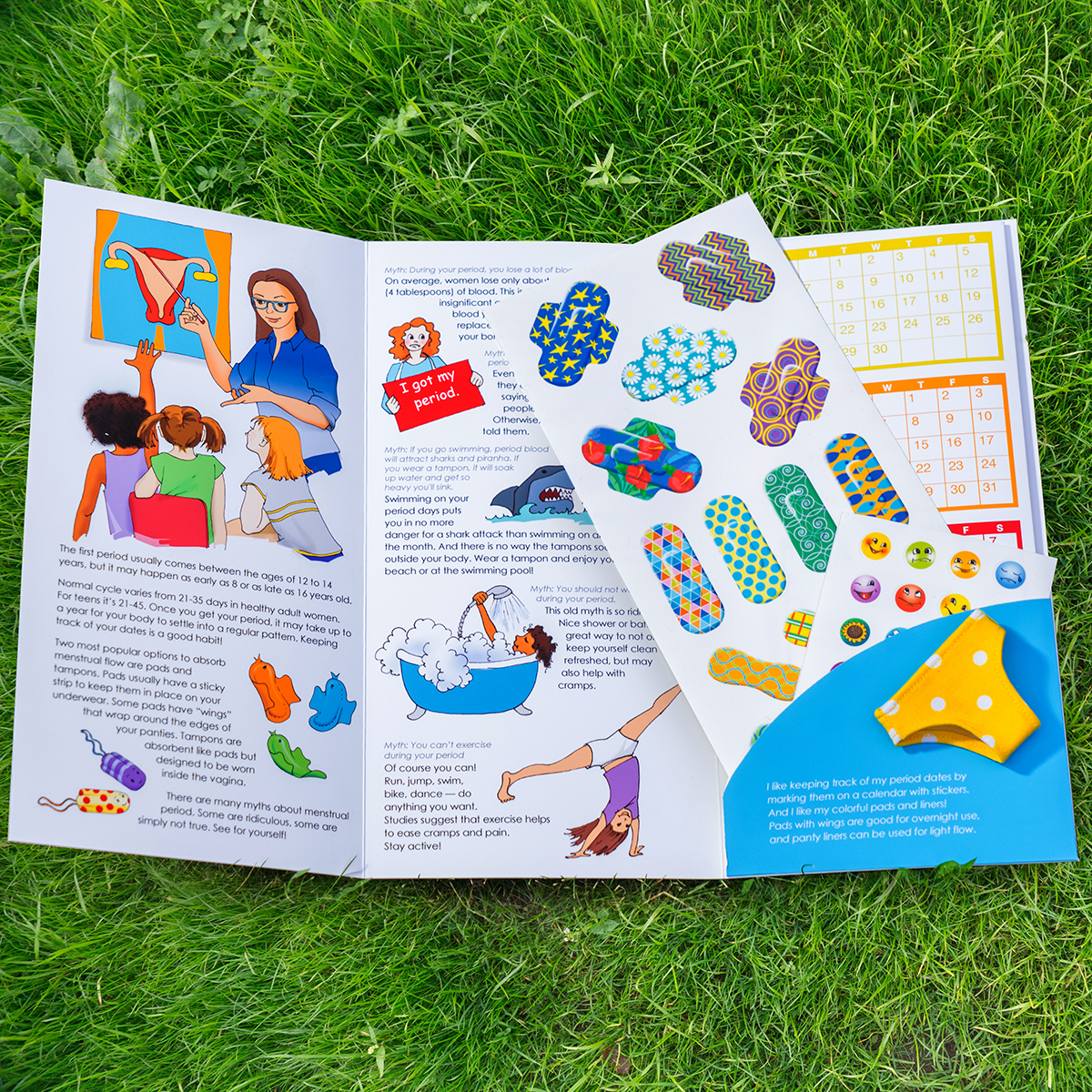Canada News
Doll creator hopes ‘Period Party’ kit helps to normalize talk about menstruation

The “Period Party” accessory kit for a Lammily doll includes coloured pads and liner stickers, a pair of panties, a calendar and dot stickers, and an educational pamphlet.
(Photo courtesy of Lammily)
TORONTO—Broaching the subject of puberty can be nerve-racking for parents and embarrassing for kids, but Nickolay Lamm is hoping to help smooth the process with an unexpected resource: miniature menstrual pads for dolls.
In 2013, Lamm made headlines when he began posting images online of what a Barbie doll should really look like, based on realistic body proportions. Crowdfunding raised more than US$500,000 to bring the Lammily doll to life and he eventually decided to take the idea one step further.
The “Period Party” accessory kit for a Lammily doll includes coloured pads and liner stickers, a pair of panties, a calendar and dot stickers, and an educational pamphlet.
“I know that menstruation is a very taboo topic in society, and so I felt like by having this ‘Period Party’ accessory pack for the doll it would be kind of like saying: ‘This is just a normal thing. It happens and it’s nothing to be ashamed of,” Lamm says in a telephone interview from Pittsburgh.
Vancouver-based sex educator Marnie Goldenberg says the product could be “one more tool in the toolkit” for parents who dread discussing the subject with their kids.
“One of the things I say to parents is: ‘If you’re uncomfortable talking to your kids _ think back. Were your parents comfortable?’ And of course, most everybody in the room (says), ‘Good god, no,”’ says Goldenberg, whose Sexplainer blog is aimed at helping parents raise sexually intelligent kids.
“Give yourself a break. You didn’t have role modelling. Nobody showed you what it is to be comfortable talking about these topics, and that doesn’t mean that you don’t have a chance, an opportunity, to find comfort.”
Dr. Megan Harrison of the Children’s Hospital of Eastern Ontario says nothing can replace having a frank conversation with your kids, but such tools can still be beneficial.
“Having something for your doll certainly normalizes (the subject), and doesn’t make it such a secret, which I think is a really good thing,” says Harrison, a pediatrician specializing in adolescent medicine.
She says it’s usually recommended that conversations with girls about puberty should start at around age eight. Rather than one long discussion, she suggested having several brief chats about how a girl’s body will change to resemble their mother, an older sister or friend.
Goldenberg says her two sons also learned about menstruation early on. They saw her “managing the fact” that she had a monthly period, which included seeing her menstrual cup, pads and blood.
“Talking to young people about menstruation for me is as elementary as talking to them about eating food and getting dressed and going to the toilet every day,” says Goldenberg, whose boys are now aged eight and 11.
“The way I explained it when my kids were really young was that my uterus would build like a water bed every month in case it needed to take care of a fetus, a growing baby. When I didn’t get pregnant, then the water bed—which is made up of mostly blood—comes out of my vagina and it starts all over again, every month.”
Harrison says it’s also important for girls to feel comfortable approaching their fathers with questions that may arise.
“Not everyone has a mom and dad, so I think it should be something that a child could go to whoever they look up to as a caregiver—and it doesn’t matter if it’s male or female.”
“I think we always tend to have the moms having that conversation, and certainly, I think that’s valuable if that works within the family. (But) I think it’s important to have a child to be able to ask their dad or their mom questions when they are the opposite sex.”





















